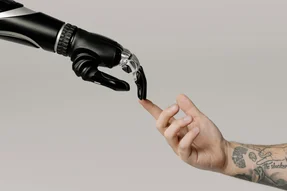The Role of Artificial Intelligence in Revolutionizing R&D

by NotedSource
The Role of Artificial Intelligence in Revolutionizing R&D
Artificial intelligence is the topic of the year so far. From Microsoft’s rollout of it’s AI tools to Google’s new AI summary feature and OpenAI’s AI personal assistant, the news is buzzing with the exponential growth and improvements in the field of AI in the last few years. There’s almost no industry that won’t be impacted by AI, and the field of research and development (R&D) is no exception.
R&D is the lifeblood of innovation across industries, including consumer products and goods, government functions, automotive, manufacturing, and many more. However, the traditional processes behind R&D are impacted by challenges like data overload, time-consuming tasks, and limited resources. These are the types of issues that AI was built to solve– and that’s why AI is poised to revolutionize the way that innovation teams approach R&D.
AI’s Impact on R&D
Accelerating Discovery and Innovation

AI can also empower creativity in the R&D process by running millions of simulations to explore new design possibilities and optimize existing ones, opening up a world of opportunities for innovation. For example, AI algorithms have been used to design new materials with specific properties, such as lightweight and high-strength materials for aerospace applications.
Enhancing Decision-Making
AI’s powerful data analytics and predictive modeling capabilities are also enhancing human decision-making throughout the R&D process. By working side-by-side with AI, researchers can make more informed choices, reduce risks, and allocate resources more effectively based on data-driven insights. This is true across industries and we are already seeing applications in finance (fraud detection systems and algorithm-based trading platforms) and the sustainable industry (including global climate modeling). Better, faster decision-making improves the efficiency of the R&D process while also increasing the chances of success for new products or solutions.
Automating Routine Tasks

Facilitating Collaboration
AI-powered platforms and tools are also facilitating collaboration and knowledge sharing among researchers, enabling them to leverage diverse skills and resources to tackle complex problems more effectively. According to R&D World, “Traditionally, organizations have been highly secretive about their R&D processes. However, in the age of AI, collaboration, information sharing, and open innovation have emerged as vital tools towards gaining a competitive advantage.” AI is encouraging open innovation in many ways, and that includes the R&D process.
In addition, tools like NotedSource are leveraging AI to help R&D teams find the right match of expert researchers for their research projects, shortening the time-consuming tasks of searching manually for researchers.
Real-World Examples
The impact of AI is already evident. Take a few examples of tools already developed and in use to mentioned in this article by ExecutiveGov:
- AI tools being used in the healthcare industry for disease diagnosis and surgery assistance
- Machine learning and NLP supporting autonomous, self-driving car safety in the automotive industry
- AI-powered image recognition helping to track endangered species for wildlife conservation organizations
In all of these cases, AI has allowed companies to speed up their innovation processes and support their work in ways that would have been unimaginable a few years ago.
Future Outlook

However, it’s important to note that the integration of AI in R&D also raises ethical considerations, such as the potential for bias in AI algorithms, privacy concerns, and the impact on employment. It’s crucial to approach AI-driven R&D with these concerns in mind and to ensure responsible use.
Conclusion
AI will undoubtedly transform the research and development landscape, offering unprecedented opportunities for accelerating discovery, augmenting human capabilities, enhancing decision-making, automating routine tasks, and facilitating collaboration. R&D teams shouldn’t shy away from embracing the powerful AI tools available to them – with a thoughtful approach to AI-driven R&D, we can unlock a future of innovation and progress that benefits everyone.